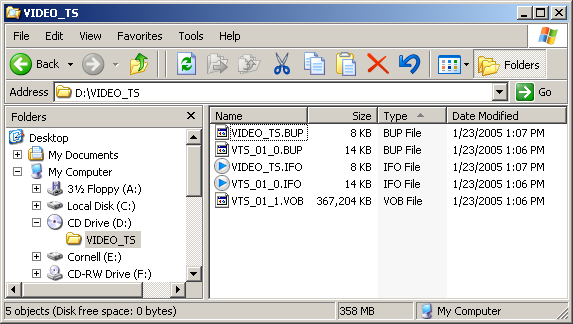DVD
From SDA Knowledge Base
Contents
Overview
Recording with a DVD recorder will produce far superior quality than recording with a VCR, so it is well worth the investment. Also, being a digital format, it poses far less "traps" to deal with than VHS. However, there is one problem that needs to be taken care of with: lag.
This isn't lag caused by the console system, but the DVD recorder. When using a DVD recorder, you hook your console's video out into the DVD recorder, and you hook the DVD recorder to your TV. The signal travels from the TV to the DVD recorder, which records it, then sends it to TV to be displayed. Unfortunately, every DVD recorder out on the market is not able to do this instantaneously. Therefore, you will see and hear what was really happening about a half-second or so ago. Obviously, this can really mess with your ability to play the game well.
Someone more knowledgable than me needs to put the solutions here.
Be sure to record on SP or better speed. See your DVD recorder's manual for more info about this. You will wreck the quality of your run if you record on a speed worse than SP.
If you decide to mail your DVD(s) to me for processing, proceed to the submission guidelines for information about how to contact Radix. Otherwise, if you want to try to encode your run yourself, keep reading.
Self Encoding
Make sure to finalize the DVD before continuing with this guide. Finalizing is done on the DVD recorder itself. DVD-ram is the only exception.
You will need to install a large number of separate pieces of software to get your run off of the DVD and encode it to H.264 / DivX. All of this software only runs on Microsoft Windows, so you will need to have access to a computer running Windows to proceed.
DVD software installation
Download the latest version of DGMPGDec utilities by Donald Graft and extract the contents to "C:\Program Files\DGMPGDec". This folder contains the DGIndex.exe application and the important DGDecode.dll file. Leave this folder alone for the moment.
Extracting the DVD source files
Begin by inserting the Finalized DVD into the DVD drive in your computer (if the DVD has not been Finalized in the DVD recorder, it probably won't work). Navigate to your DVD drive and select all of the .VOB or .VRO files from the VIDEO_TS folder on the DVD you inserted. Copy them to a folder where you will do your video processing. For the purposes of this guide the video processing folder will be aptly named "C:\video processing".
Creating the project file (.d2v)
Open DGIndex.exe inside the DGMPGDec directory you unzipped during the software installation. Go to Audio -> Output Method and set it to demux all tracks. Now go to File -> Open, or just hit F2. Navigate to "C:\video processing" and select all of the .VOB (or .M2V) files. Hit OK twice to proceed to the main screen.
From here, simply go to File -> Save Project and save the file with a name you can remember. For this guide it will be "C:\video processing\vob.d2v".
DGIndex will do the work of demuxing your run and, after a time, will finish and beep.
You can now proceed to the Avisynth page.
Advanced tip: If you have a short segment and do not want to extract the whole vob file, you can load the vob files into DGIndex straight from your DVD drive, make a selection in DGIndex with the bracket buttons at the bottom right of the window, and then go to File -> Save Project and Demux Video. This will create a m2v file which you will have to re-index because the d2v file is still pointing to the vob files on your DVD drive. That means you'll have to load the m2v file into DGIndex and Save Project again. Important: If the audio file has a name like "vob T01 2_0ch 192Kbps DELAY -84ms.ac3" MAKE SURE you do not remove the audio delay information.
Return to the front page.
